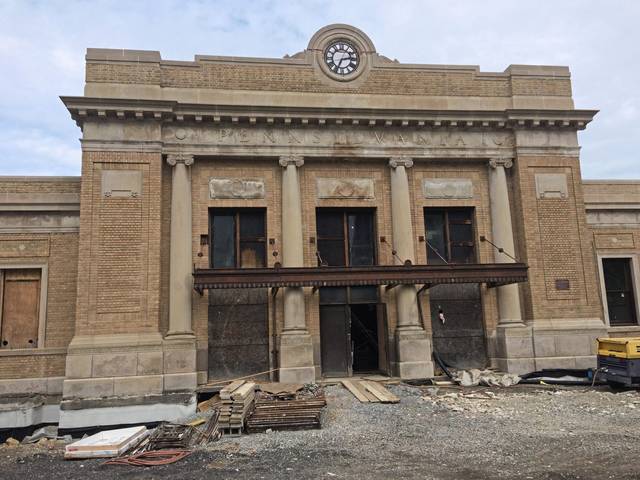https://naviga.triblive.com/local/historic-buildings-in-allegheny-county-receive-tax-credit-in-effort-to-help-preserve-revitalize-sites/
Historic buildings in Allegheny County receive tax credit in effort to help preserve, revitalize sites

Six historic buildings in Allegheny County have received Historic Preservation Tax Credits as part an effort to help preserve and revitalize the sites.
The latest recipients of the tax credits were announced Friday by Department of Community and Economic Development Secretary Dennis Davin and Pennsylvania Historical and Museum Commission Executive Director Andrea Lowery.
State investment in the program, through $5 million in tax credits, will help create an estimated $215 million in rehabilitation expenditures for projects that aim to “preserve historic buildings, revitalize communities and promote local economic development.”
“The preservation of historic buildings in Pennsylvania is vital to simultaneously revitalize communities while still telling stories of the past,” Davin said. “With this funding, the awardees can modernize and bring new life to these spaces — resulting in new opportunities in places to live, work and play in neighborhoods across the state.”
There are 27 projects funded through the initiative this year.
In all, there were 49 applicants who sought nearly $21 million in tax credits for construction projects totaling more than $394 million in estimated construction costs.
Several projects funded through the Historic Preservation Tax Credit program are located within Allegheny County.
• In Wilkinsburg, the Pennsylvania Railroad Station will be rehabilitated into a multi-purpose venue with a restaurant. The train station, listed on the National Register of Historic Places, received an allocation of $300,000 in tax credits for a construction project that will cost close to $4 million.
The railroad station was built in 1916, but sat vacant from 1965 until a revitalization project started construction on the site again in 2017, said Tracey Evans, executive director of Wilkinsburg Community Development Corp., which is rehabilitating the historic building.
“When we started construction, it was on the edge of being unsalvageable,” Evans said. “It was a really beautiful building that was on the brink of not being able to be saved.”
The restoration project involved fixing a damaged roof, restoring masonry on the exterior and repairing the floor. The inside lobby, Evans said, is made of marble — and restoring it required them to order three slabs of different types of marble from Italy.
The project — which is nearly done and is slated to be celebrated with a ribbon cutting in late September — was only possible because of preservation grants and historic tax credits, which they have received federally and on the state level.
“They’re essential,” Evans said.
It’s also essential to revitalize these historic buildings, she said, noting that the Pennsylvania Railroad Station will house a sit-down restaurant and several businesses once the project is completed.
“It really is a symbol in Wilkinsburg of restoration, revitalization for the community,” Evans said. “We want it to bring people in — a local destination for the community.”
• The First United Presbyterian Church of Braddock — which is a National Register church — received a $255,000 tax credit allocation for close to $2 million estimated construction expenses. The funds will go toward a project to rehabilitate the site into affordable housing.
• At the Maul Building in Pittsburgh, a $125,000 tax credit allocation will be used for rehabilitation of the significant terra cotta-clad commercial building in the East Carson Street Historic District. Estimated construction expenditures are listed at $2.5 million.
• The Rite-Aid Building in Pittsburgh — described as a “significant commercial building with distinctive chamfered corner in the East Carson Street Historic District” — received a $125,000 tax credit allocation for a rehabilitation project expected to cost about $3.2 million.
• The Frick Building Annex in Pittsburgh received a $300,000 tax credit allocation for $19.5 million in estimated construction expenses. The site — which is listed on the National Register as a Burnham and Co. designed building — will be rehabilitated into market rate apartments.
• Hazelwood Brewing Co., a brewery listed on the National Register, will be rehabilitated back into three micro-breweries, using a tax credit of $300,000 for the project, which is slated to cost about $4.7 million.
“The Historic Preservation Tax Credit encourages revitalization of distressed communities, preservation of state and local heritage, and long-term economic development,” said Lowery, of the Pennsylvania Historical and Museum Commission. “The 27 projects awarded this year yield long-term benefits beyond the projects themselves, having significant positive spillover effects through the reuse of historic buildings in Pennsylvania cities and towns.”
Since 2013, the Historic Preservation Tax Credit Program has invested more than $28 million to rehabilitate 154 historic buildings leveraging about $2 billion in construction expenditures.
Copyright ©2025— Trib Total Media, LLC (TribLIVE.com)
